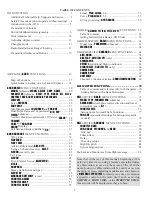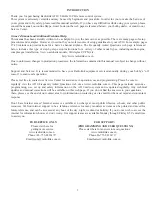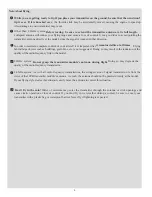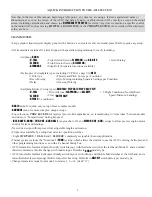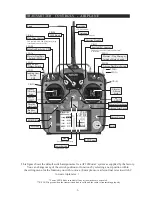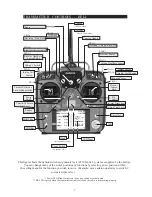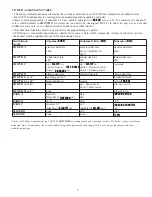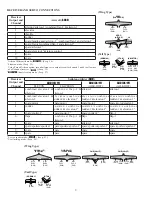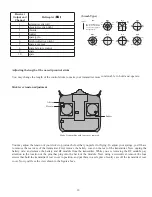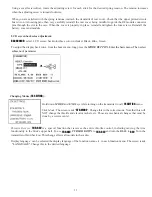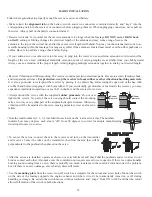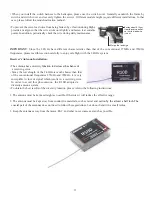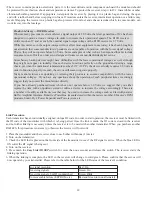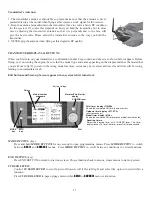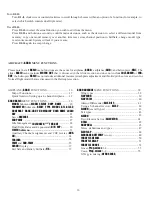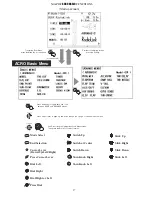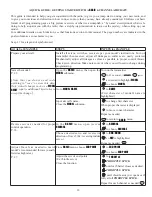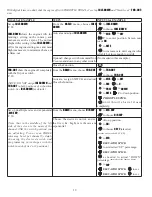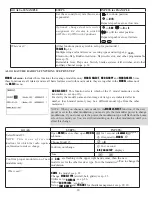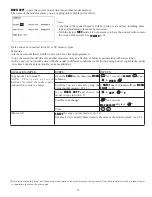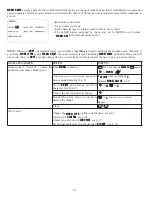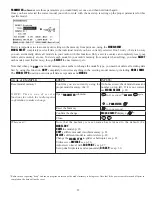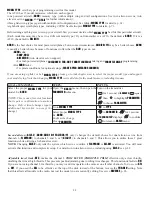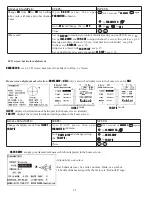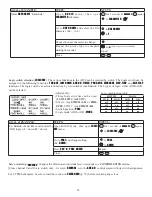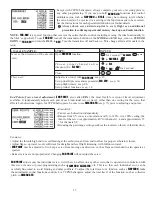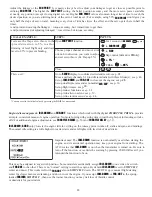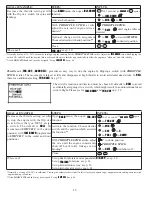
14
• The receiver contains precision electronic parts. It is the most delicate radio component on-board the model and should
EHSURWHFWHGIURPYLEUDWLRQVKRFNDQGWHPSHUDWXUHH[WUHPHV7RSURWHFWWKHUHFHLYHUZUDSLWLQ5&IRDPUXEEHURURWKHU
vibration-absorbing material. If appropriate, waterproof the receiver by placing it in a plastic bag and closing the open
end with a rubber band before wrapping it in foam. If moisture enters the receiver, intermittent operation or a failure may
result. Wrapping the receiver in a plastic bag also protects it from fuel and exhaust residue which, in some models, can
work its way into the fuselage.
Product Advisory — R10D Receiver
Whereas many previous receivers offered a signal output of 3.0 Volts, the latest generation of ICs has been
designed to operate at lower voltages in order to increase their operational speeds. The R10D receiver
utilizes such an IC and, as such, the nominal signal output voltage of the R10D receiver is 2.7 Volts.
While this variance in the output voltage will not affect most equipment in use today, it has been brought to
our attention that some manufacturers’ products are not capable of operation with the lower signal voltage.
That is, they will not operate below 3.0 Volts. Some examples of what we have had reported thus far include
sequencers, cut-off valves, older servo designs and some recent non-
Radiolink
digital servos.
6RPHEDWWHU\EDFNXSGHYLFHVPLJKWKDYHGLI¿FXOWLHVZLWKWKHORZHURSHUDWLRQDOYROWDJHVDVZHOODOWKRXJK
they might not appear to initially. One such device functions perfectly on the ground and during a range
check, yet when the operational temperature reaches 50°C (122°F), the device actually requires 2.8 Volts in
order to function properly. As such, the servos will cease to operate properly.
Many manufacturers are updating or refining their products to ensure compatibility with the lower
operational voltages. If you have any questions about the operation of such peripheral items we strongly
suggest that you contact the manufacturer directly.
If you have already purchased items which can not operate below 3.0 Volts, we suggest that you either
replace the item with an updated version or utilize a device to increase the voltage accordingly. There are
a number of readily available devices that may be used to increase the voltage such as ElectroDynamics’
%XIIHU$PSOL¿HU,QWHUIDFH'XUDOLWH¶V3RZHU%R[PDQXIDFWXUHGZLWKLQWKHODVWVL[PRQWKV(0FRWHF¶V'36,
products, Smart-Fly’s Power Expander and Powersystem, etc.
Link Procedure:
Each transmitter has an individually assigned, unique ID code. In order to start operation, the receiver must be linked with
the ID code of the transmitter with which it is being paired. Once the link is made, the ID code is stored in the receiver
and no further linking is necessary unless the receiver is to be used with another transmitter. When you purchase another
R6014FS, this procedure is necessary; otherwise the receiver will not work.
1. Place the transmitter and the receiver close to each other within one (1) meter.
2. Turn on the transmitter.
3. Check the LED that is placed on the front side of the transmitter to see if the RF signal is active. When the blue LED is
ON solid, the RF signal is being sent.
4. Turn on the receiver.
5. Press down the
Easy Link(ID SET)
switch for more than one second, and release the switch. The receiver starts the
linking operation.
:KHQWKHOLQNLQJLVFRPSOHWHWKH/('LQWKHUHFHLYHUZLOOFKDQJHWRVROLGJUHHQ3OHDVHFRQ¿UPWKDWWKHVHUYRVZLOO
now operate by your transmitter. Please refer to the table below for the LED status of the receiver's condition.
No signal reception
Red : On
Receiving signals
Green: On
Receiving signals, but ID is unmatched.
Green: Blink
Unrecoverable failure (EEPROM, etc.)
Red and Green turn on alternately.


